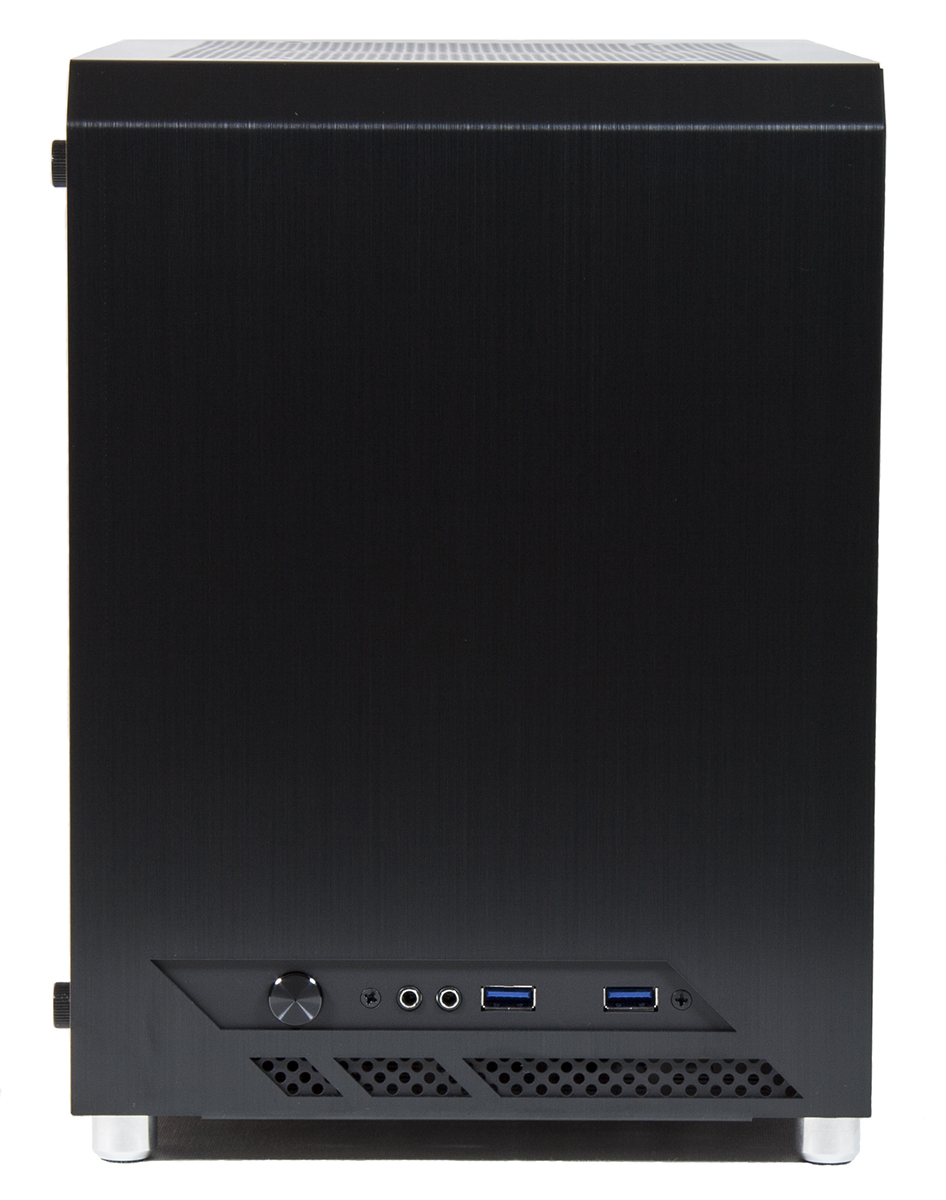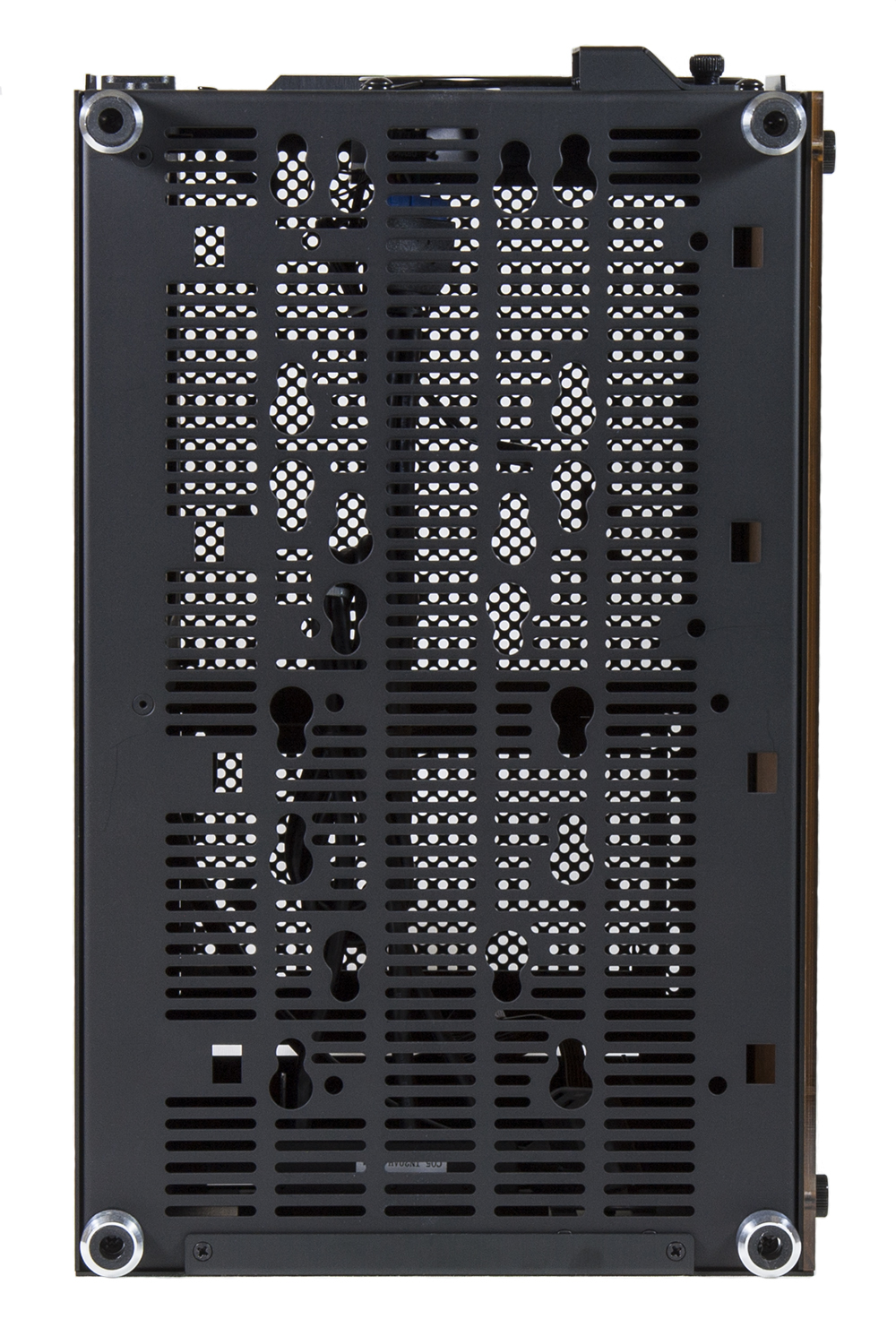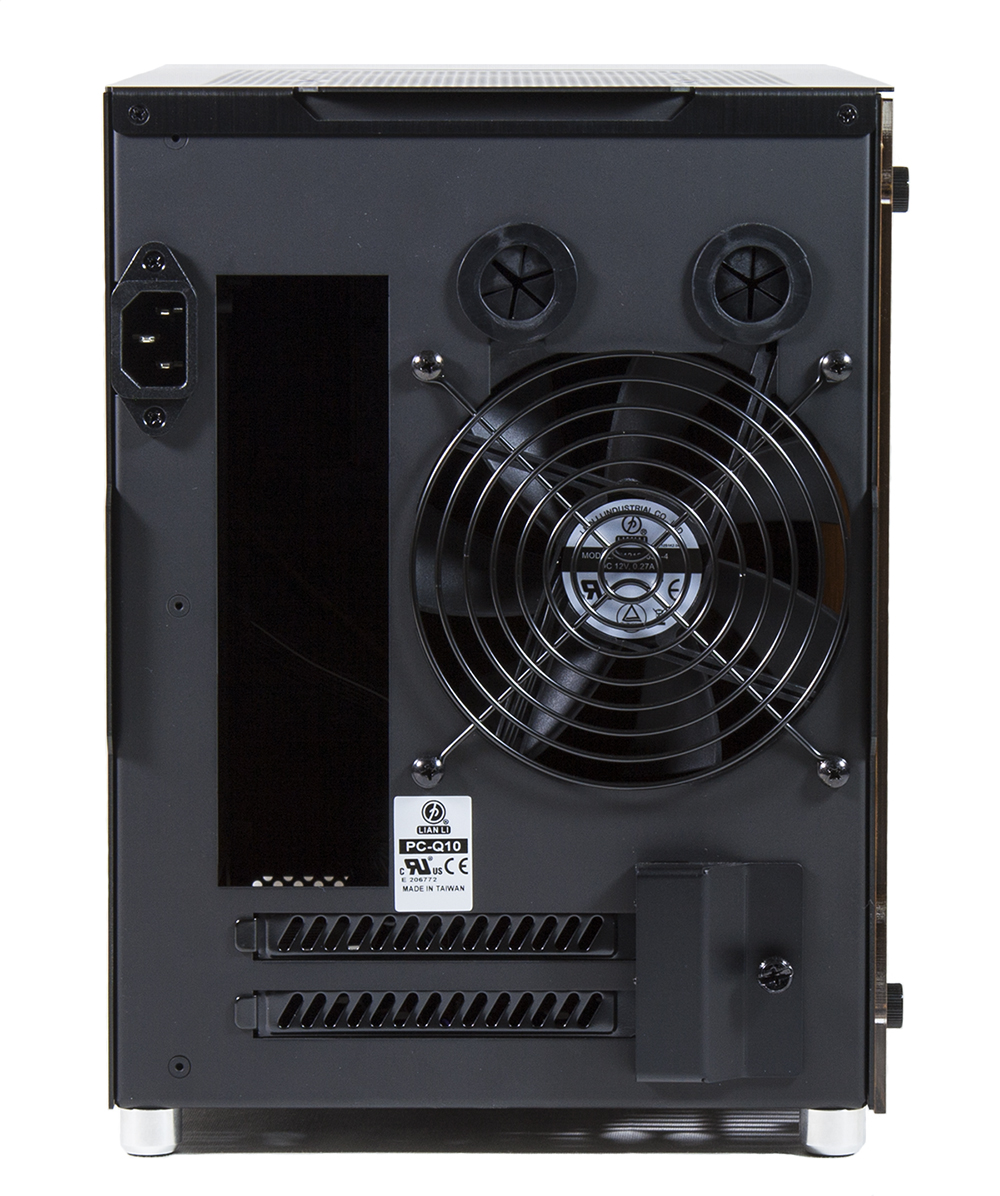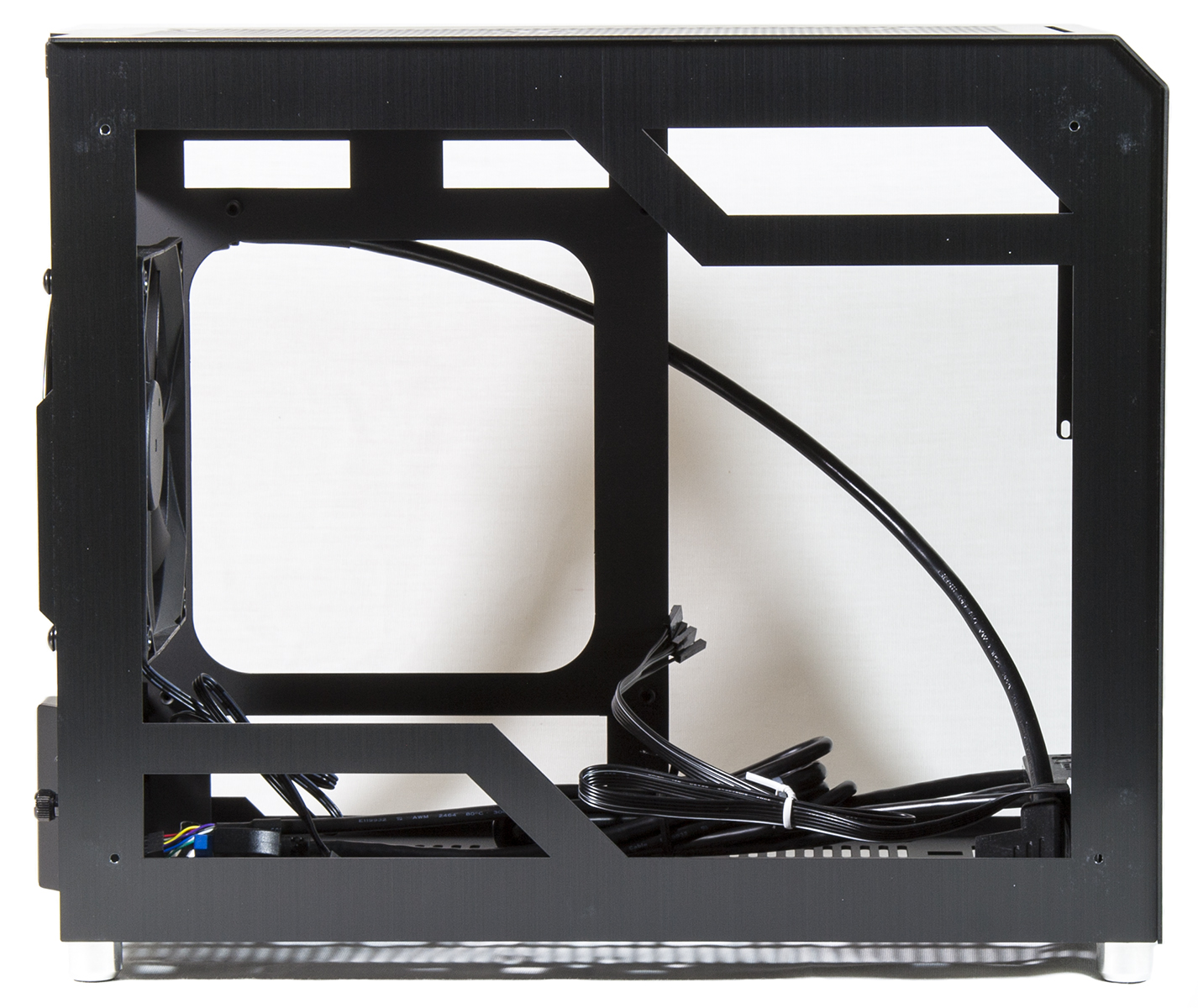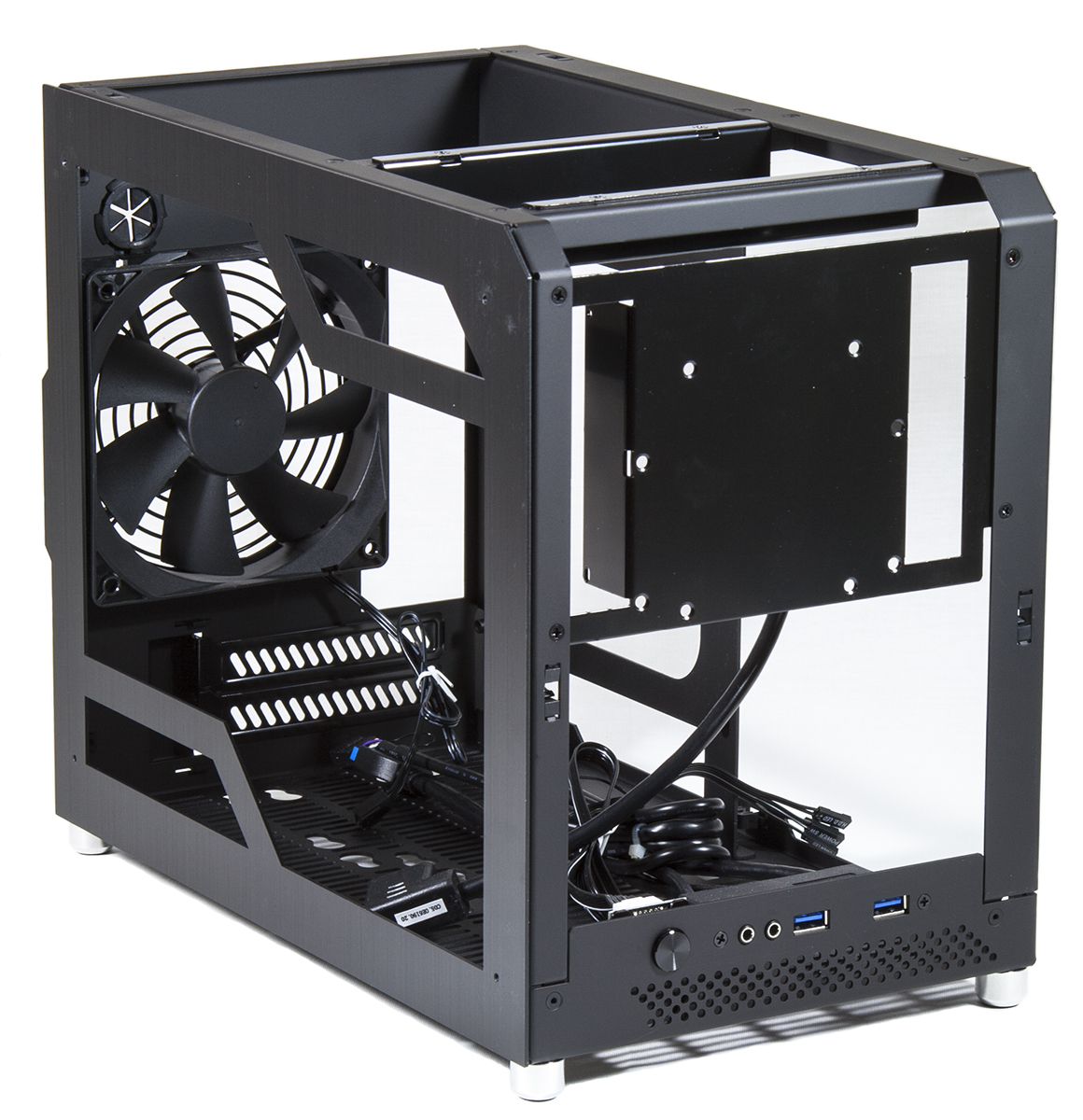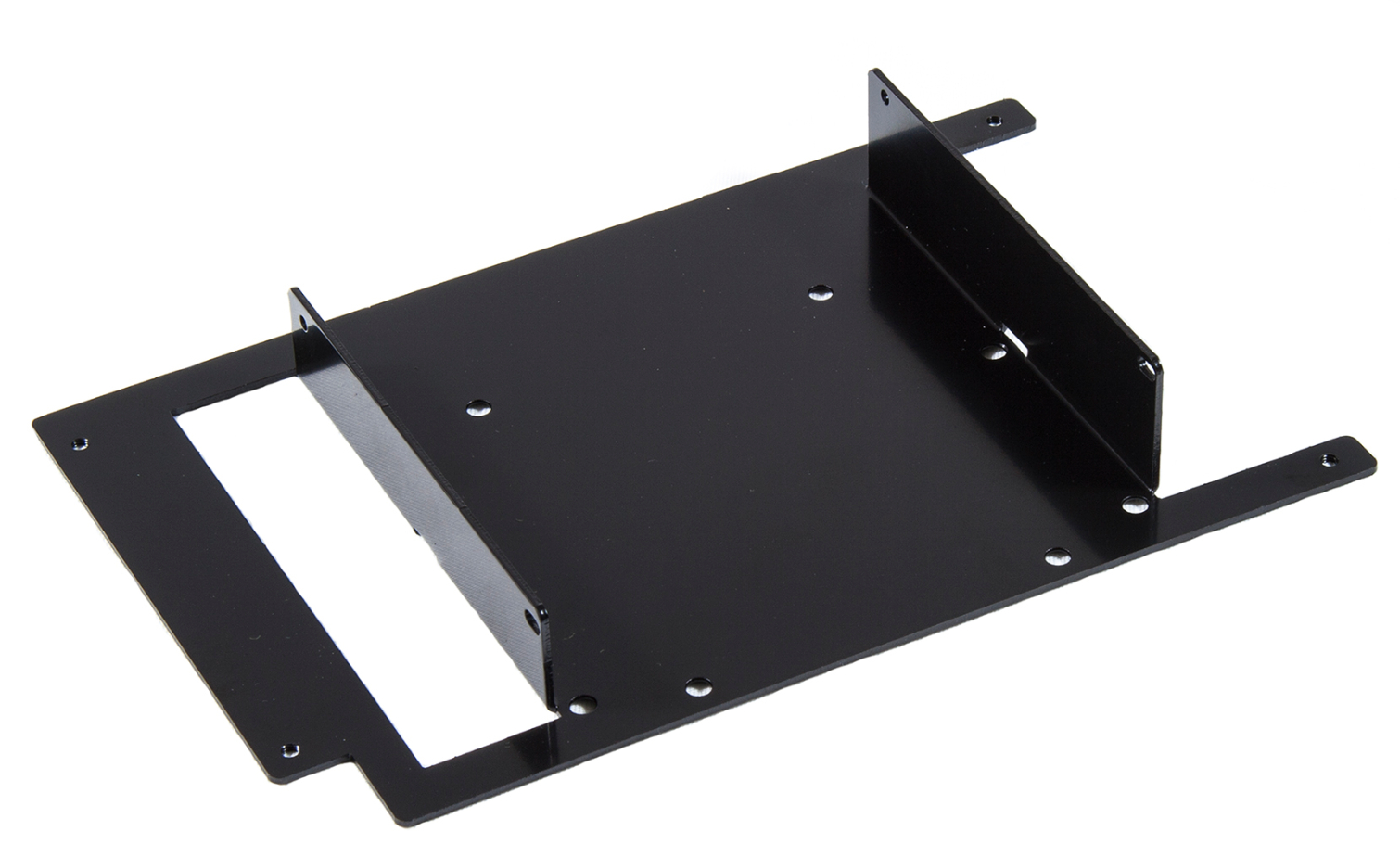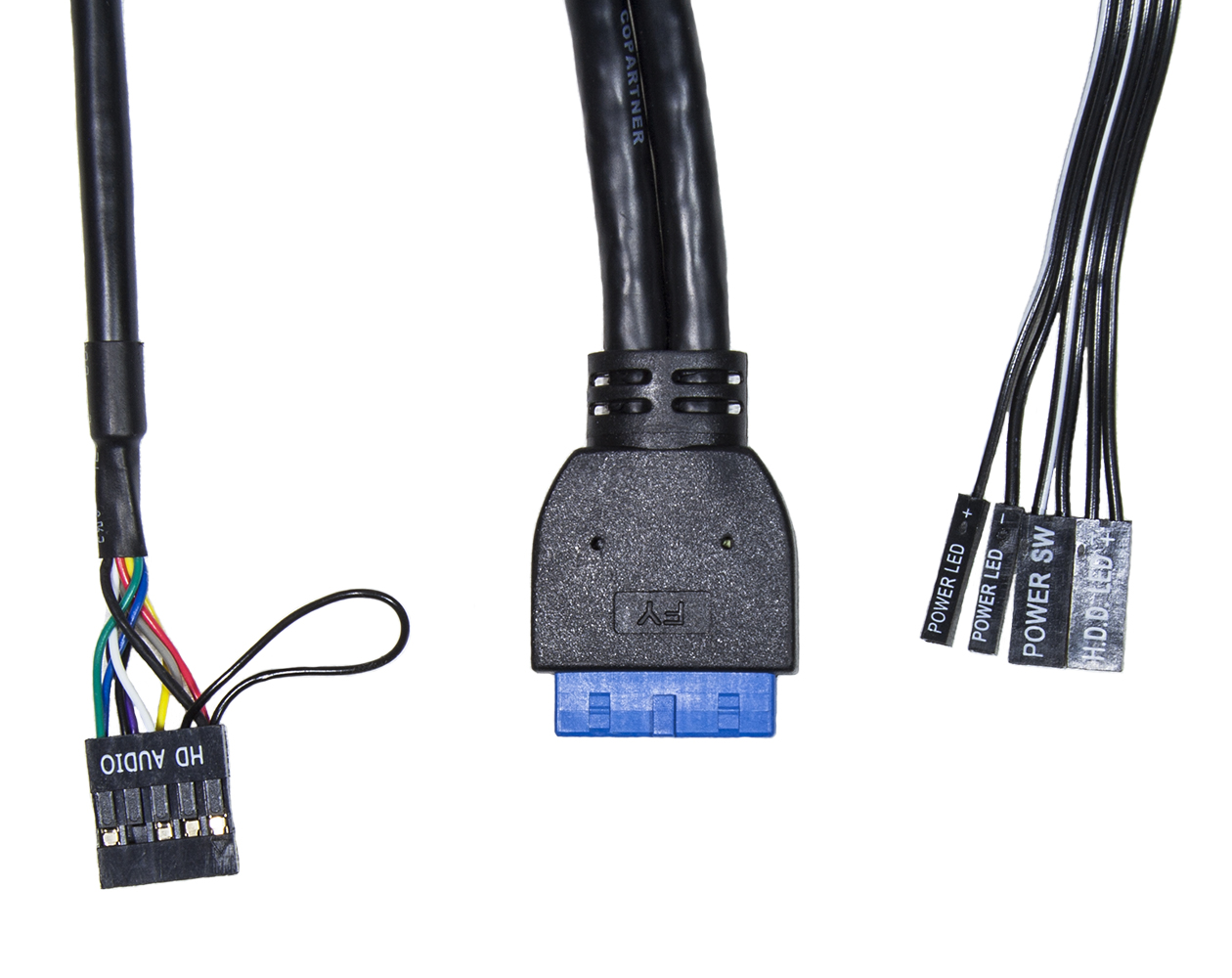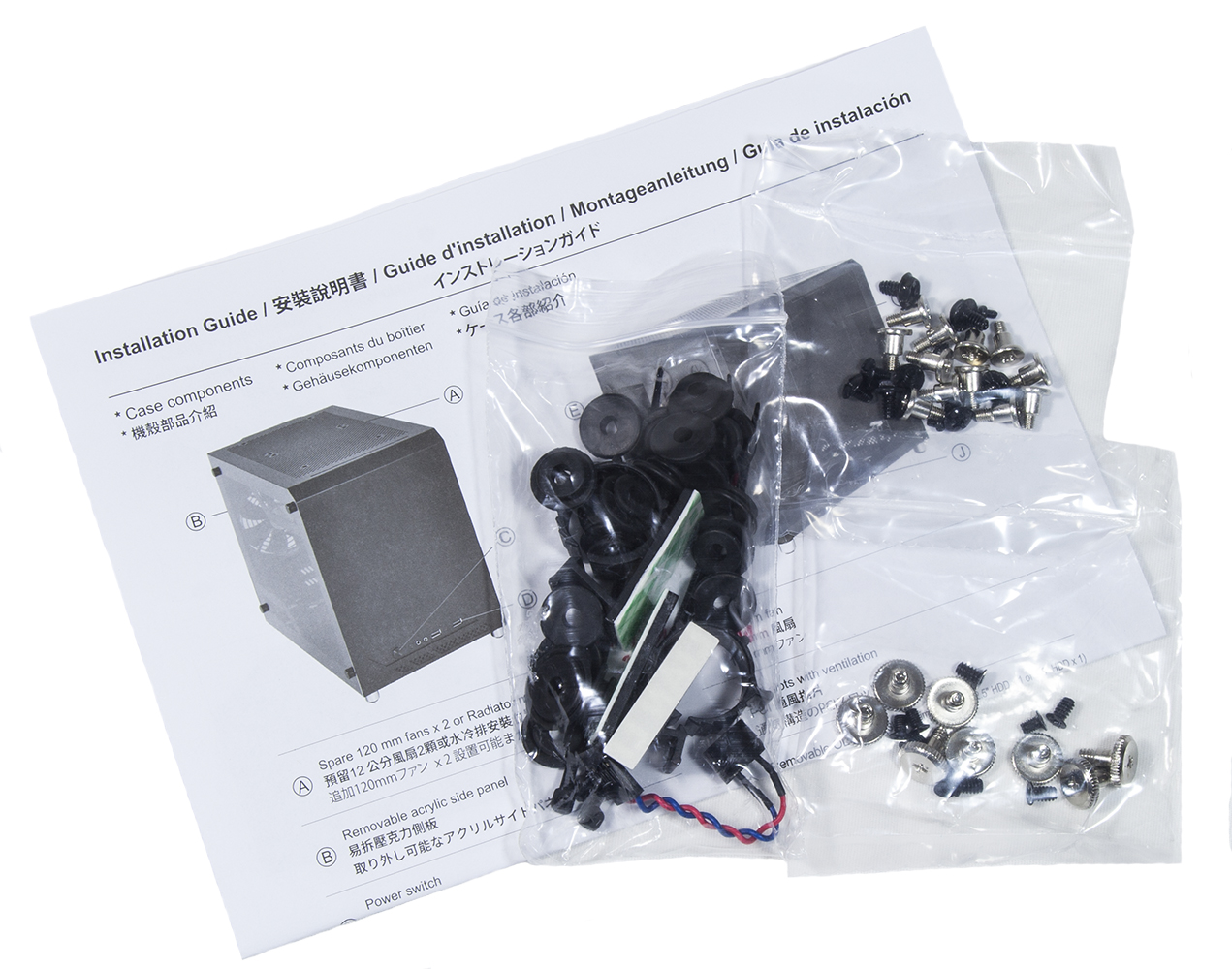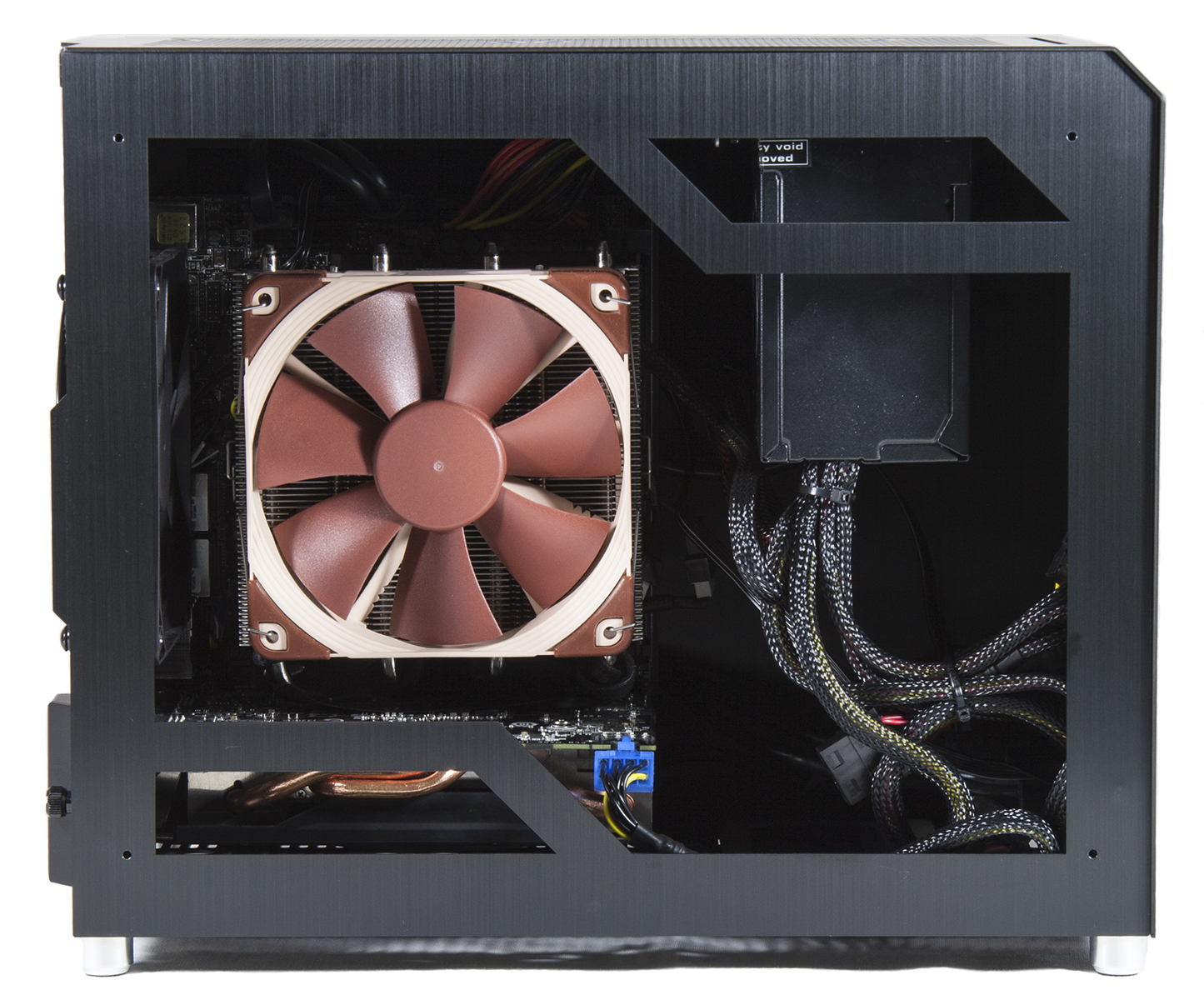Compact Mini-ITX Case Round-Up
Today we're putting three compact Mini-ITX cases to the test: Cougar's QBX, ID-Cooling's T60-SFX and Lian Li's PC-Q10.
Lian Li PC-Q10
Why you can trust Tom's Hardware
Fresh on the market after debuting this year at Computex, the PC-Q10 from Lian Li builds upon their already popular Q series of cases. The PC-Q10 is the first to couple the series' compact, minimalist style, with a full size acrylic window to show off your hard work. However, those premium looks also come with a premium price tag, making the PC-Q10 is the most expensive case in this round-up by a wide margin.
Exterior
Hands down the PC-Q10 is a premium product. The case itself is constructed almost entirely of brushed aluminum and acrylic, except for a few occasional pieces. Additionally, both the side window and aluminum panels are made out of thick, quality material and everything on the outside of the chassis lines up perfectly. Since acrylic is very soft and scratches easily, the window panel ships with a lining on both sides to keep it clean and protected during shipping (and during the build). The panel itself is secured to the case using four plastic thumbscrews. In addition to the thumbscrews, the part of the frame that the window attaches to, as well as the case's top/front and left panel all attach to the case via a pushpin style mount, which are easily removed to access the interior of the case. Finally, the PC-Q10 supports the use of a slim, slot-loading optical drive and several water- and air-cooling configurations.
The top and front panels of the PC-Q10 are constructed out of a single piece of brushed aluminum, and secured to the case by both Lian Li's pushpin style mount and two sets of screws on the rear and bottom of the case. The front panel is simple in design and consists of a combination power button and power/hard drive activity light, a standard set of jacks for front panel audio connections and a pair of widely spaced USB 3.0 ports. One thing that's worth noting is that while the USB ports have a good bit of spacing, they're also recessed just a bit behind the front panel, which may cause some issues when trying to use an oversized USB connector with the right port. That aside, to add to the premium nature of this product, Lian Li actually cut the power button from a solid piece of aluminum, giving it a very solid feel. Finally, the PC-Q10 includes a small air vent up front in an attempt to maintain airflow through the case.
The bottom of the PC-Q10 comes with numerous holes for mounting case fans and hard drives, along with slots to provide a source of airflow to the case's internal components. The chassis includes two sets of holes for mounting two 120mm cases fans as well as several sets of teardrop-shaped holes for mounting various configurations of solid state drives, compact hard drives and full size hard drives. Lian Li provides several sets of rubber spacers that mount to the bottom of the drives, enabling them to be mounted to the bottom of the case while also dampening any vibrations. Additionally, the screws that mount the spacers to the drives are tool-less, which makes for a quick and easy installation. Finally, the PC-Q10 comes with a set of aluminum feet with rubber bottoms to give the case some clearance from whatever it's sitting on, which again helps provide more air to the vent slots at the bottom.
The rear of the PC-Q10 comes with a single 120mm fan pre-installed with a guard in place for protection. Also around back are a set of holes with grommets for users who want to use their own liquid cooling setup. In case you're wondering, although the case supports a 240mm radiator for liquid cooling, it wasn't designed with enough room for it to be mounted inside the case. Instead, it was intended for users to mount the radiator to the top of the case, and then pass the tubing and water block through the back, which is where the pair of holes comes in. For users not wishing to have a radiator sitting on top of their case, the PC-Q10 also supports the use of a 120mm radiator internally, in place of the case fan. Moving on, the case sports a pair of expansion slots with replaceable covers — as expected on a case with a price tag north of $100. Additionally, the PC-Q10 comes with a removable guard over the top of the slot covers, which while unnecessary is also a nice touch that adds to the premium feel of the case. Finally, towards the top of the rear is the other pair of screws that secure the top/front panel.
Interior
To access the inside of the case all you have to do is pull off the left panel and either unscrew the window or just pull off the entire panel assembly. For the side of the case with the window, it will probably be easier to just remove the whole panel when building in the case, otherwise it's going to bit of a tight fit trying to get the motherboard in the case between the protrusions in the part of the frame that holds the window. The case comes with the motherboard standoffs pre-installed as well as a sizable cutout in the motherboard tray which should provide ample access to the back of the board. After the side panels are removed, the only thing left to do before starting the build is to remove the top/front panel.
After removing the four screws that secure the front/top panel, it simply pulls off the case like all of the others. From this angle, you can see most of the inside of the case and the generous amount of space there is to work with. The PC-Q10 comes with plenty of room for whatever you want to put in it, as it supports graphics cards up to 10.69 inches (270mm) in length and CPU coolers up to 5.51 inches (140mm) in height. Also visible up top is the bracket to which the power supply mounts. The PC-Q10 only supports the use of PS/2 power supplies up to 5.90 inches (150mm) in length. However, SFX power supplies are also usable with the use of an SFX to PS/2 adapter plate. Finally, the case also includes a bracket at the front for mounting either a slot-loading slim optical drive, 2.5" or 3.5" hard drives. The bracket can also be removed if it's not needed.
For those who might be interested, here's a close up of the case's front mounting bracket for the slim optical drive:
The PC-Q10 comes with the same standard arrangement of cables that all modern cases come with. As with the previous two cases, the PC-Q10 ditches the legacy audio and USB 2.0 front panel connections, and instead only includes HD audio and USB 3.0 connections. Finally, the case also includes the standard set of front panel power connections.
The Build
The Lian Li PC-Q10 comes with a surprisingly detailed instruction manual, which provides plenty of information about all of the case's features and how to make use of them. Also included are two packs of screws, and a pack of rubber feet for mounting hard drives, tie-downs and clamps for cable management, and a speaker for the motherboard. Finally, Lian Li also includes a case badge with the company's logo on it, which can be applied if desired.
Building inside the case is straightforward, and with all of the body panels removed, there's plenty of space to move components around and your hands to work in. One thing that quickly becomes apparent when building with the PC-Q10 is the lack of cable management. Unfortunately, there's a large cutout in the left side of the case next to the motherboard tray which prevents cables from being hidden between the tray and the left side panel. There really isn't any other good place inside the case to hide extra cables. Fortunately, Lian Li included several zip-ties and peel-and-stick cable retainers to help deal with that issue. Additionally, the use of a modular power supply and a careful layout will further help to give the case a neat look and optimal airflow.
With the acrylic window reinstalled, everything comes together. With the final case assembled, let's move on to testing today's trio.
Current page: Lian Li PC-Q10
Prev Page ID-Cooling T60-SFX Next Page How We Test, Results & ConclusionGet Tom's Hardware's best news and in-depth reviews, straight to your inbox.

